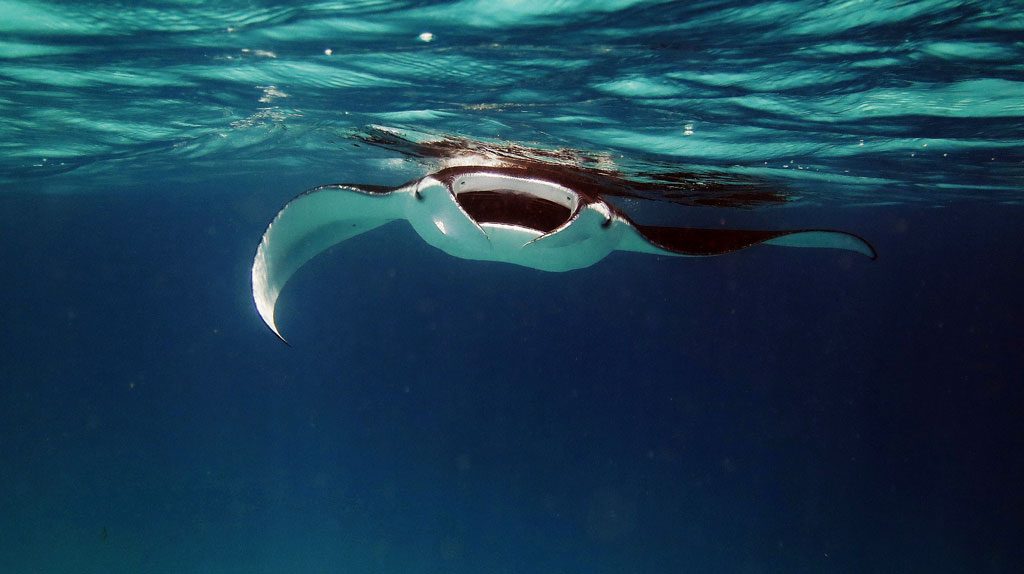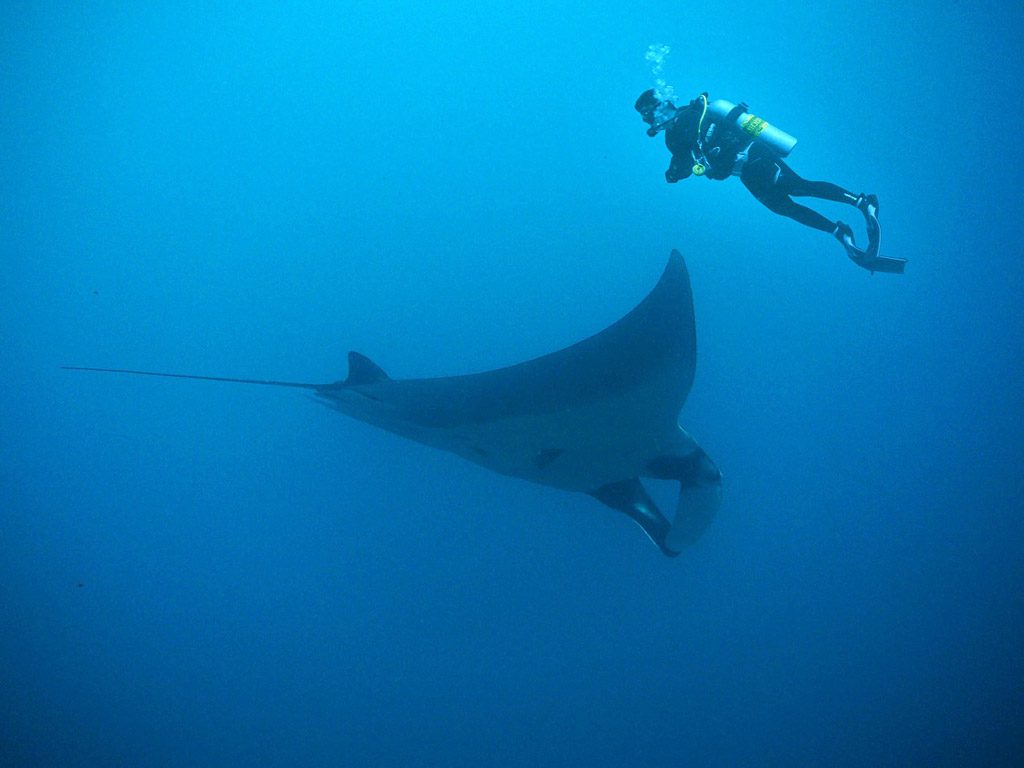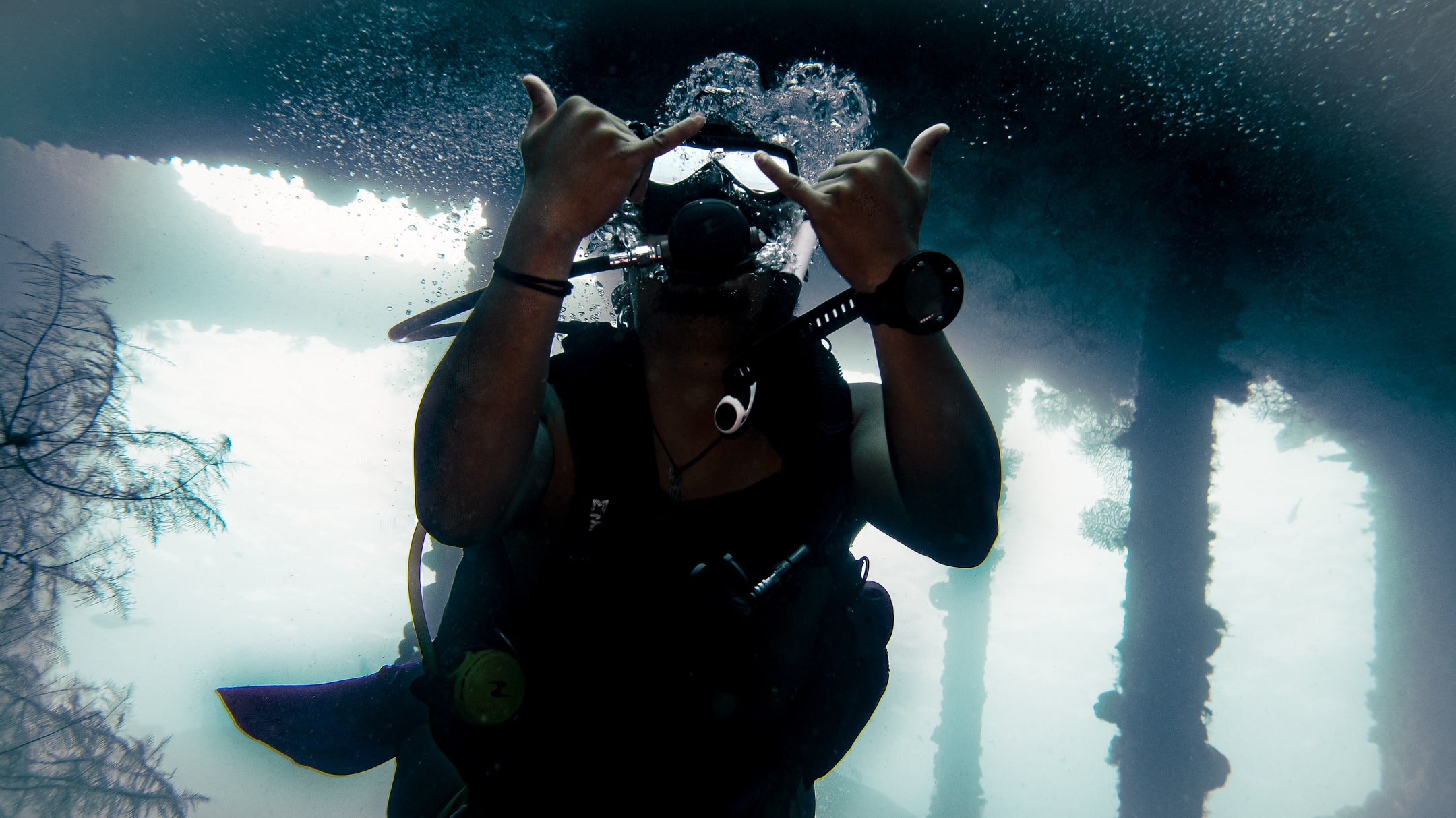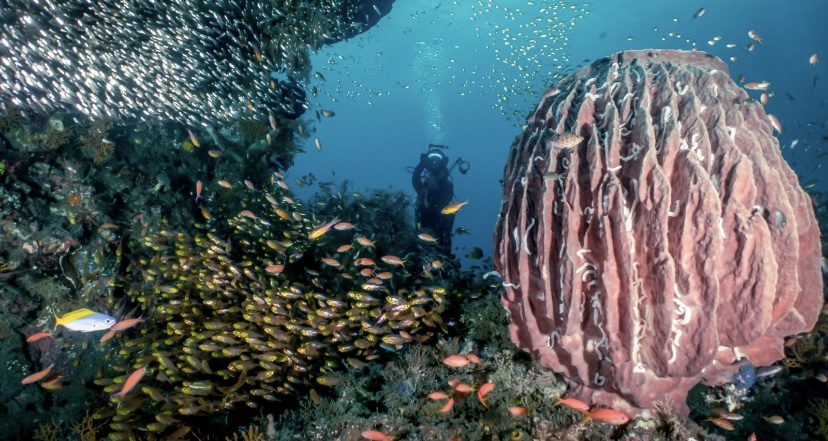Manta literally means cloak in Spanish, which is fairly self-explanatory. They are nicknamed ‘Devil Rays’ for their horns (which are actually extensions of fins) that help funnel plankton into their mouths. Unlike other rays, mantas do not have a spine on their tail for defense.
When you are diving in Bali, or Nusa Penida’s Manta Point to be exact, you’ll be able to get up close and personal with these enormous but harmless creatures. If you’re lucky, you will also meet Blue Spotted Stingrays on the sandy bottom, so keep your eyes peeled! Fortunately for us, Manta Rays can be seen all-year round.
Did you know some manta rays have a wingspan of more than 3 meters? This week, Blue Season Bali lists several interesting facts about the manta rays you can see in Bali’s subaquatic world.

- To the world’s current knowledge, there are 11 species in the ray family, counting both manta and mobula rays. Manta rays were only split into two species in 2009, and there’s probably a third species residing in the Atlantic.
- Manta rays have the largest brain to body weight ratio of any living fish, giving it enough smarts to make the average dolphin jealous.
- Like leopard sharks, manta rays can be individually identified by the spots on the underside of their bodies.
- Mantas pop out little manta pups every other year, conveniently rolled up like little burritos. However, the relatively slow reproduction rate makes them vulnerable to overfishing.
- Manta rays are found in tropical and subtropical oceans worldwide, between 35 degrees north and 35 degrees south latitude.
- Manta rays have a non-functioning tail spine and 300 useless little teeth, making them completely harmless to humans. They feed on crustaceans, plankton, and small fish.
- According to fossil records, the devil rays have been around in their modern form for at least 20-25 million years. True manta rays first appeared in the fossil record approximately 4.8 million years ago.
- Giant manta rays, in particular, are truly deep-divers. To keep their large brains warm, these rays have an amazing counter-current heat exchange system going on within their veins and arteries. It allows them to become effectively warm-blooded, or at least keep their temperature more stable than most fish.

Do you have any tips to spot Mantas? Let us know in the comments or tell us about your experience diving at Manta Point!



